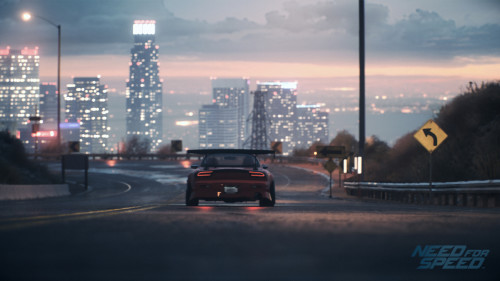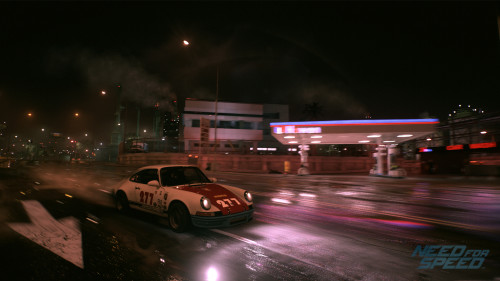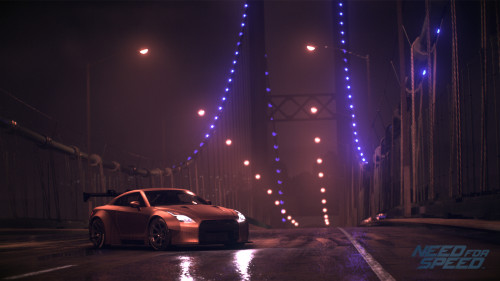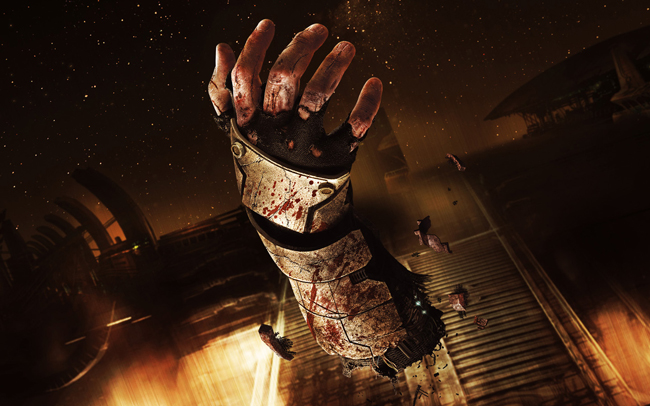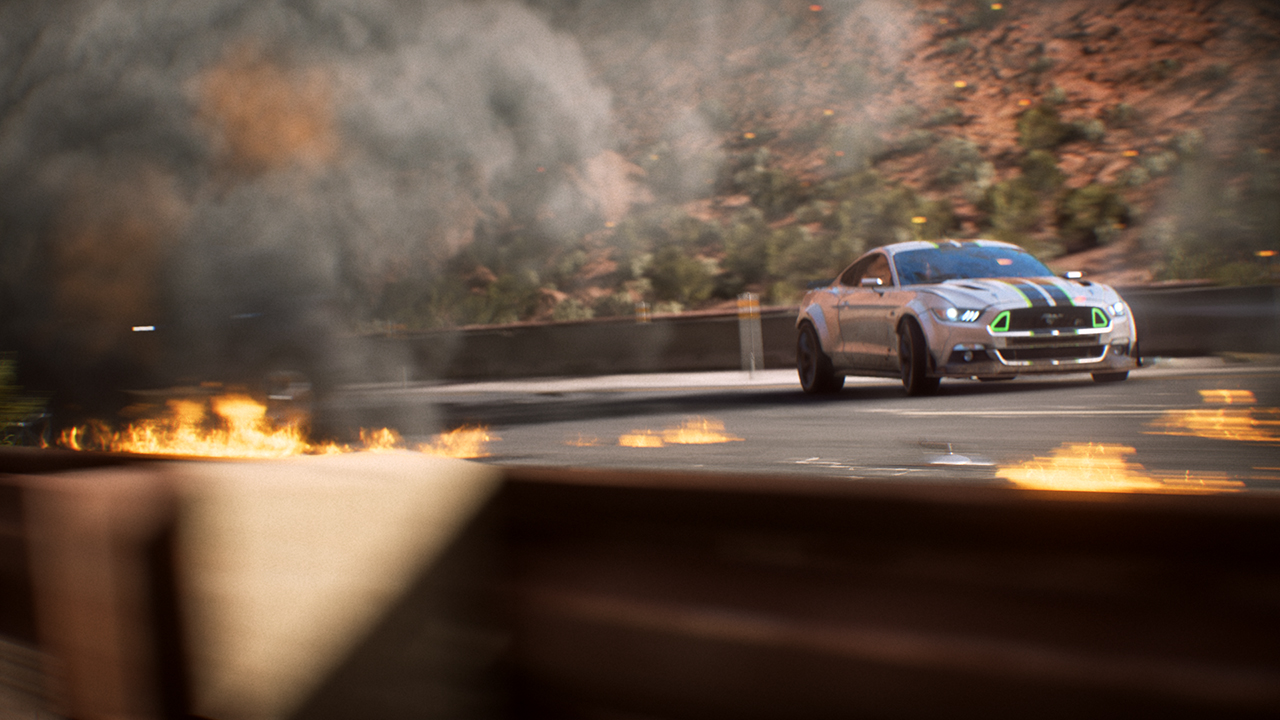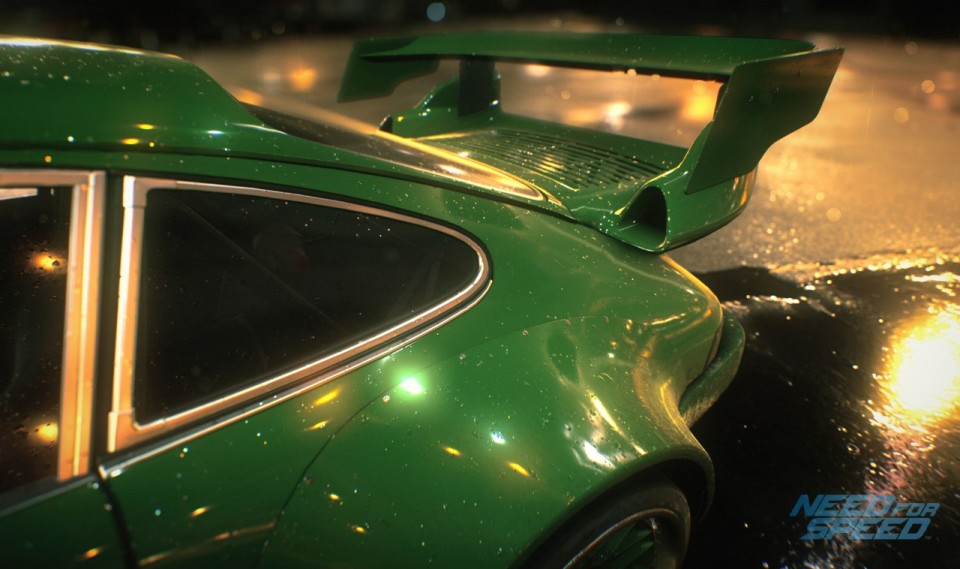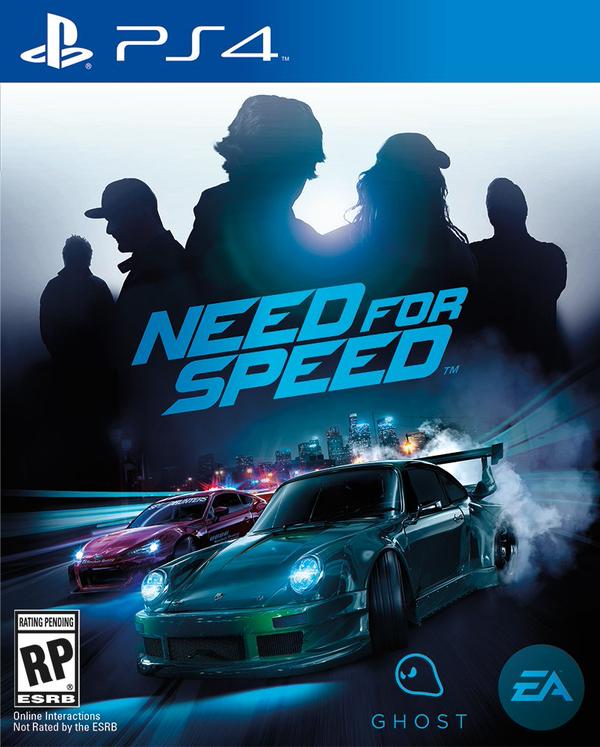
There’s no racing franchise with as colourful and varied a history as EA’s Need For Speed. First appearing on, of all things, the 3DO in 1994, the game was one of the first racing games to use realtime 3D graphics, and it was that rare title of the time that actually made good use of full motion video.
Twenty-one years later, the latest installment in the series, which is also just called Need For Speed, feels like it calls back to the original title, not just because it re-uses the name (well, minus the ‘the’), but because it also, somewhat bizarrely, uses FMV cutscenes.
While going back to the original name suggests that this is a reboot, I feel it’s more a tribute to the series, perhaps a celebration of its twenty-one years. This is backed up by the fact that it incorporates elements from many other Need For Speed titles from years past. There’s the underground street racing atmosphere of the Underground subseries created by setting the game entirely at night; the constant threat of police pursuit, as in Hot Pursuit and Most Wanted; the open-world design of Most Wanted as well; and the upgrading and car-purchasing system that was the trademark of Shift and its sequel.
Taken like this, Need For Speed actually does work as a fitting tribute to the entire series. It combines these disparate elements into a single whole, and it holds together pretty well. The racing is very much on the arcade end of the spectrum, but that’s okay because the game isn’t pretending to be Forza (they tried that with Shift and Shift 2: Unleashed), and for what they are, the racing physics, and especially the drift physics are solid and fun. I haven’t had this much fun drifting about the place since the Project Gotham Racing games.
The biggest weakness in Need For Speed is the story that ties all the racing together. The full motion video cutscenes are a cute novelty (and, as mentioned, a nice throwback to the series’ origins), but they are just really, really bad. The young actors clearly try their best, but the script they’ve been given was written by someone with no idea how real people interact. Everyone talks as though they’re using a Facebook chat room, and the result is cringeworthy.
The other weird aspect of these scenes is that they’re shot from a first-person perspective, casting the player as the silent protagonist. This makes the sequences feel even more bizarre and surreal than they already are. Oddly, you’re specifically a male character in these scenes, despite the fact that it would have been relatively easy to avoid gendering the main character at all (and thus allow the player to choose whether to play a male or female character). It’s probably giving the writers of this awful script too much credit to assume they even considered that, though.
These characters exist in a dystopia called Ventura Bay. Here, the sun never rises, and it’s almost constantly raining in most parts of the city. While this makes for some very nice visuals (the Frostbite engine is being used to great effect), it also makes for a bizarre break from reality, especially because the sun sometimes almost seems to break through, only to disappear again. There’s no reason the game couldn’t look as good in day as night, and it’s another really odd aspect of the game’s setting.
For reasons best known only to EA’s executive team, Need For Speed is an online-only game. Several times during my play sessions I was kicked entirely out of the game due to a network issue or server maintenance. There’s not even an option to play offline, and while this enables other players to roam around your instance of the world, it also means that you can be dropped out from your sixth attempt at a fairly tough race just as you’re finally about to win (ask me how I know this).
Need For Speed offers a small but solid collection of cars. While it doesn’t match the hundreds of cars of a Forza or Gran Turismo, there’s enough that you’ll have options at each power level. Upgrades are somewhat simplistic, however, generally only increasing your cars performance numbers with no significant side-effects. Obviously, starting with a more powerful base will help, but upgrades can get you pretty far with even smaller cars. My starting Subaru BR-Z lasted well over half the game before I felt the need to replace it, although I did run a nicely-tuned Miata for drift events (as any car nut knows, the answer is always Miata) after I discovered how much better it was than the Trueno I had been wrestling with early on.
I spent a lot of time wondering exactly who Need For Speed was aimed at. Standing at my local EB Games, I saw a kid of around 12 pull a copy of it off the shelf and give it a thorough examination. He was here to spend his parents money on a video game, and he was really looking at it.
“It’s pretty good,” I said to him, even though I hadn’t really made my mind up as to whether or not it was.
“Yeah?”
“Yeah. The racing is really fun.” This time, I was much more certain.
He turned and walked away, holding the box as he went over to his parents. I don’t know if they did buy the game, but I like to believe they did. And maybe that’s all that really matters. The corny acting, the weird always-raining always-night setting, the loose, easy to learn drift physics, and the simplistic tuning settings are all there to help a 12-year-old kid buy his first car game.
Or maybe it’s to remind us all that, sometimes, we just want to be a 12-year-old kid pretending to be adult enough that they can drive fast cars on long wide freeways without a care in the world. And that may just be the true Need For Speed.
Solid arcade-style racing and drifting
Beautifully-lit night scenery thanks to Frostbite
The writing in the FMV cutscenes is terrible
Upgrade system is simplistic if you're used to Forza

